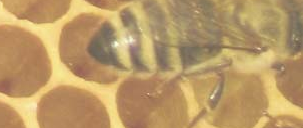
Honeybee Colony Collapse Disorder
Colony Collapse Disorder is the phenomenon that occurs when the majority of worker bees in a colony simply disappear in a relatively brief time period. They leave behind a queen, plenty of food and a few nurse bees to care for the remaining immature bees and the queen but the hive may still not survive. The key symptoms are:
- Sudden loss of a colony’s worker bee population with very few dead bees found near the colony.
- The queen and brood (young) remained, and the colonies had relatively abundant honey and pollen reserves.
- But the hive cannot sustain itself without worker bees and the hive eventually dies.
Likely Causes
There are many theories about the causes, but over time, research has led to the following factors as likely causes:
- An invasive varroa mite (a pest of honey bees).
- New honeybee diseases such as Israeli Acute Paralysis virus and the gut parasite Nosema.
- Pesticide poisoning of honeybees by exposure to farm pesticides or even those used for in-hive insect or mite control.
- Stress caused to bees such as when the hive is transported to locations across the country for providing pollination services.
- Changes to the habitat where bees forage, causing fewer flowers and farther distances
- Other bee immune-suppressing stress caused by a combination of factors above.
Outlook
The situation appears to be improving. Reported cases of CCD have declined substantially over the last five years. The number of winter hive losses (a primaryindicator) due to CCD has dropped from roughly 60 percent of total hives lost in 2008 to 31.1 percent in 2013; the most recent data available.
References:
- US EPA
- Find out more about colony collapse disorder from the USDA Agricultural Research Service
- Survey of bee losses winter of 2014/2015
- Managing pesticide risk to insect pollinators -